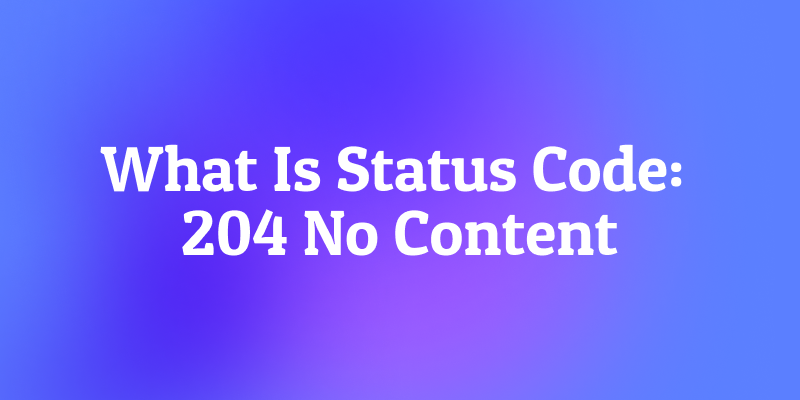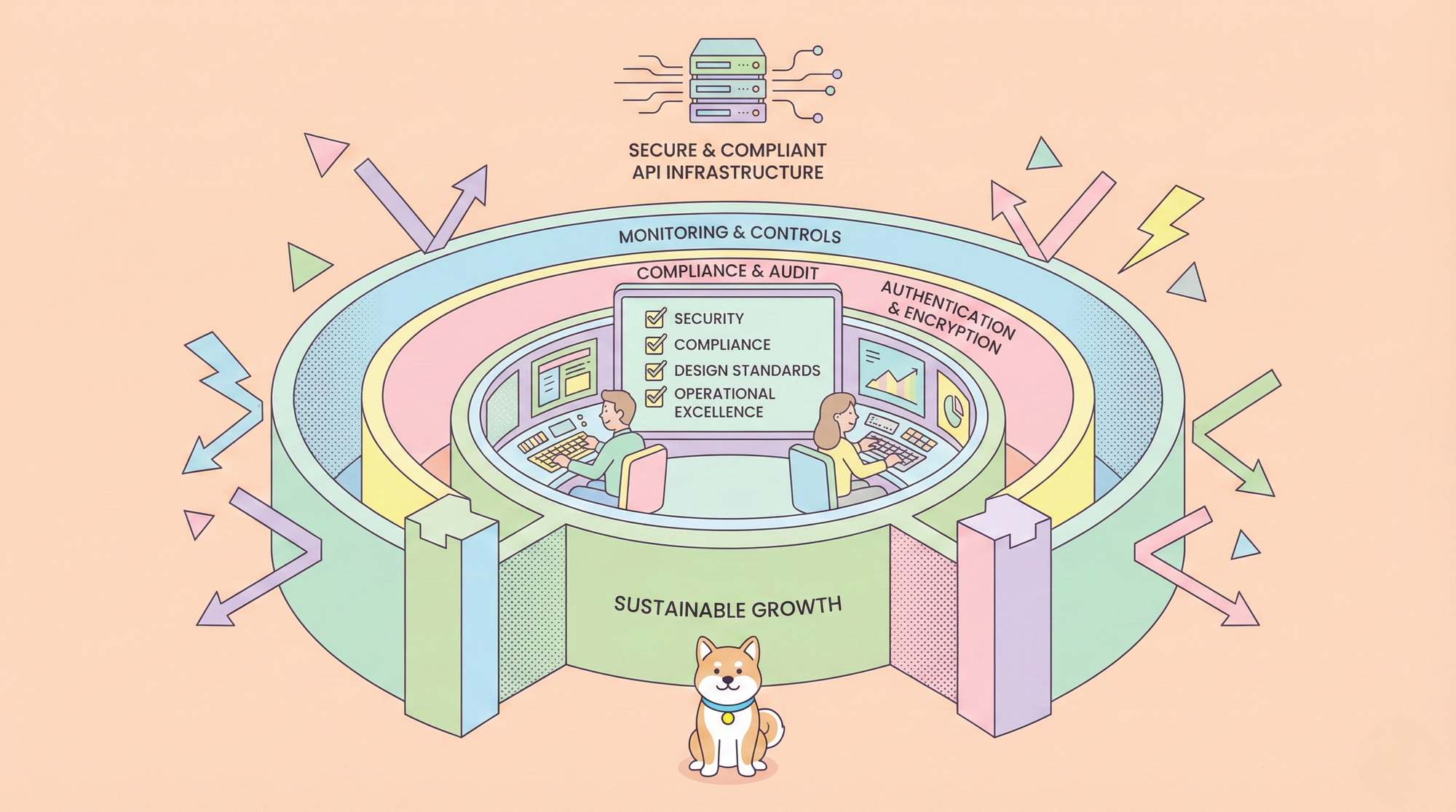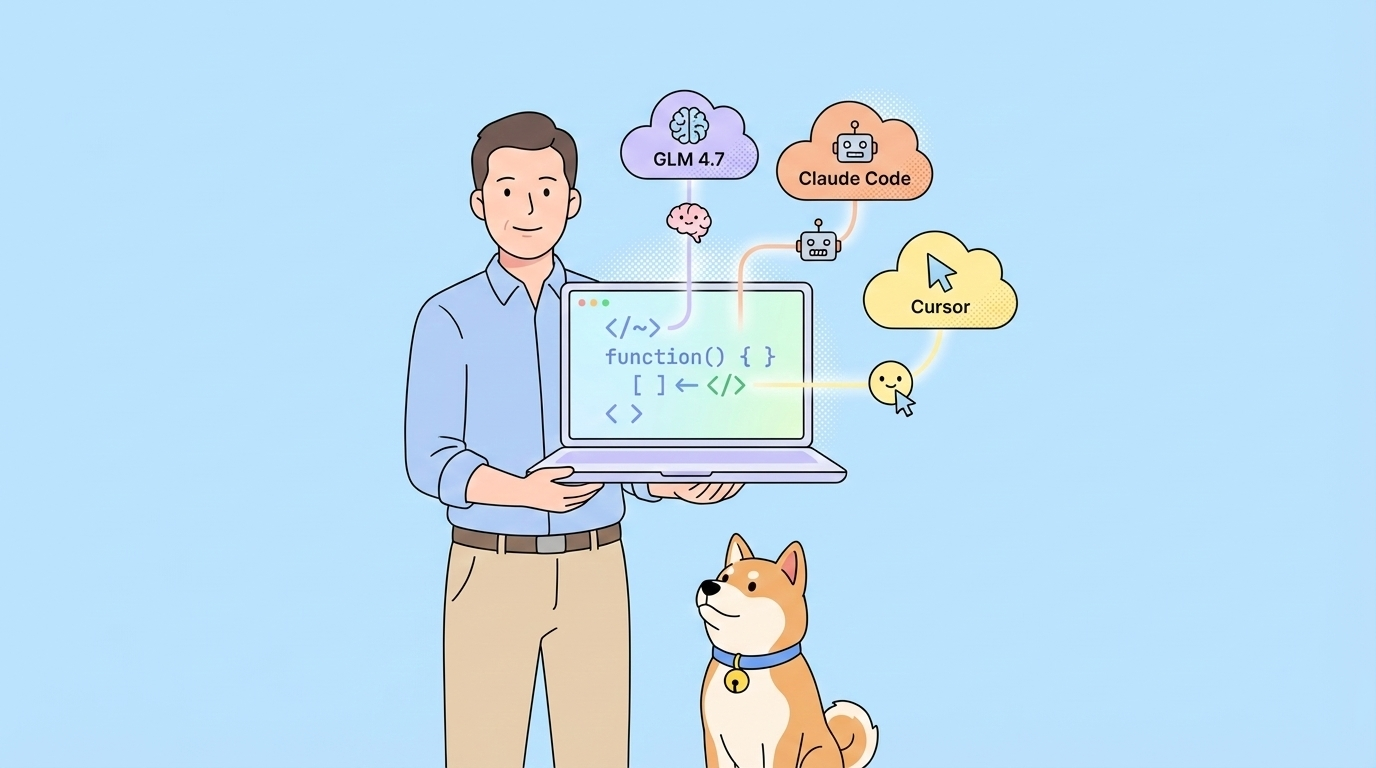You're using a well-designed web application. You delete an item from your list, update a setting, or mark a task as complete. The action happens instantly and seamlessly. There's no flashy "Success!" message, no new data loading on the screen, just the quiet, confident confirmation that what you intended to do has been done.
This elegant, minimalist user experience is often powered by one of the most misunderstood and underappreciated HTTP status codes: 204 No Content.
Unlike its chatty cousin 200 OK, which always has something to say, the 204 status code is the strong, silent type of the HTTP world. It's the server's way of giving a simple thumbs-up, a nod of acknowledgment. It says, "I successfully processed your request. There's nothing for me to send back to you, and that's exactly how it's supposed to be."
So, what does it mean? Why does it exist? And more importantly, how should you use it in your APIs?
If you're a developer building APIs or web applications, understanding and correctly implementing 204 No Content is a mark of professionalism and a key to creating efficient, clean, and predictable systems.
If you want to experiment with how 204 No Content works in real-world APIs, you don't need to spin up a custom server. Instead, you should definitely check out Apidog, a free API testing and documentation tool. Apidog makes it easy to test your APIs and see exactly how different status codes, like 204, behave in real scenarios. Plus, it helps you document and collaborate with your team seamlessly. Download Apidog for free and get a clearer, hands-on understanding of your API responses as we explore the 204 status code!
Now, let's break down HTTP 204 No Content in plain language and go deep into why it matters.
What Does HTTP 204 No Content Actually Mean?
The 204 No Content status code tells the client that the request was successful, but the server did not send any content in the response body. This might seem strange at first how can a request be successful without sending data? But actually, this is a very useful and intentional signal in web development. The official definition (from RFC 7231) is succinct:
Let's break down the key parts:
- "The server has successfully fulfilled the request...": This is crucial. It's a full success code. The operation, whether deletion, update, or toggle, was completed without a hitch.
- "...there is no additional content to send...": The server has nothing to say. No data needs to be transferred back to the client to communicate this success.
- "...in the response payload body.": The response will have headers and a status line, but the body will be intentionally empty. This saves bandwidth and processing time.
In practice, a 204 response looks like this:
HTTP/1.1 204 No ContentX-RateLimit-Limit: 1000X-RateLimit-Remaining: 999
That's it. No body. No Content-Length header. Just a clean, efficient confirmation.
Whenever a client sends a request that doesn't need a full response body, for example, after submitting form data, deleting a resource, or performing an action where no further content is necessary, the server can respond with 204. This tells the client, "Your request was processed correctly, but here's nothing new to show you."
A classic analogy: Imagine you ask your friend to take out the trash. They do it, come back, and say nothing because the job's done, and there's nothing else to report. That's 204 in action.
The Key Characteristics of 204
Here's what makes 204 unique:
- It's a success code: The request was completed successfully.
- No body allowed: The response must not include a message body.
- Headers still possible: You can still send headers like
Content-TypeorETag. - Efficient: Saves bandwidth since there's no payload.
Why Does the 204 Status Code Exist?
You might wonder, couldn't servers just respond with a 200 OK and an empty message body if there's no content?
Here's why the 204 status code is important:
- Efficiency: It reduces unnecessary data transmission, especially useful for mobile or limited bandwidth networks.
- Client Behavior: Some clients interpret a 204 response differently from an empty 200 response. For example, browsers won't attempt to refresh or reload the page based on a 204 response.
- Semantic Clarity: 204 clearly communicates intent—it says the request succeeded, but there is simply no content to send.
- Avoiding Unwanted UI Changes: In some web apps, sending a 204 prevents unwanted page reloads or interface flickers.
Essentially, 204 streamlines communication between server and client by letting both sides know that no content changes are needed.
Why Do We Need 204 No Content?
You might be wondering: Why not just use 200 OK and return an empty body?
Great question. The answer lies in clear communication between servers and clients.
- 200 OK implies there could be a response body.
- 204 No Content makes it explicit: "There's no content here, and that's intentional."
This distinction helps clients like browsers, mobile apps, or API consumers know they don’t need to process or parse a body.
When to Use 204 No Content: The Perfect Fit
You should use the 204 status code in one primary scenario:
When the client's request was successful, and the client does not need to change its state or view in any way beyond what was already implied by the request itself.
Let's look at some classic examples:
1. The Quintessential Use Case: DELETE Operations
This is the most common and appropriate use for 204. When a client deletes a resource, what should the server send back? The deleted resource? That doesn't make sense. A message saying "It was deleted"? The 204 status code is that message.
- Request:
DELETE /api/articles/123 - Response:
204 No Content - Client Behavior: The client knows the article is gone. It can remove it from its local UI state. No further information is needed.
2. Updating Resources with PUT/PATCH
When a client updates a resource using PUT or PATCH, it already has the complete representation of the resource it wants. If the update is successful, the server often doesn't need to send the entire resource back.
- Request:
PATCH /api/users/me { "theme": "dark" } - Response:
204 No Content - Client Behavior: The client already knows the desired new state ("theme": "dark"). It can assume the update was successful and apply the change to its local state immediately. A
204is more efficient than the server echoing back the entire user object.
3. Toggle Actions
Actions that simply toggle a state are perfect for 204.
- Request:
POST /api/notifications/456/mark-as-read - Response:
204 No Content - Client Behavior: The client can change the notification's visual state from "unread" to "read" in the UI. No further data is required.
204 vs. 200 OK: A Critical Distinction
This is where many developers get tripped up. Is it ever okay to just use 200 OK with an empty body?
Technically, yes. But semantically, 204 is the better, more precise choice.
- A
200 OKwith an empty body sends a mixed message. It says, "Here is a successful response! (But I have nothing to show you)." It's like a waiter saying, "Here is your meal!" and presenting an empty plate. - A
204 No Contentis clear and unambiguous. It says, "Success. And I have nothing to show you because you already have everything you need." It's the waiter giving you a thumbs-up from across the room after you've finished your meal, confirming they've seen you and there's no need for further action.
Using 204 correctly is a sign of a well-designed, thoughtful API.
Common Use Cases for 204 No Content
Let’s look at some real-world scenarios where you’ll likely see or want to use 204 No Content:
- Deleting a resource: When a client deletes an item through an API (e.g., DELETE /users/123), the server can respond with 204 to signify that the resource was successfully deleted, and there's nothing to return.
- Updating a resource without returning it: Sometimes PUT or PATCH requests update a resource but don’t need to send back the updated data immediately, so 204 is appropriate.
- Form submissions: When submitting a form via AJAX, a 204 tells the client that the submission succeeded but there’s no new content to load or display.
- Ping or heartbeat endpoints: For health checks or keep-alives, a 204 response indicates success without unnecessarily sending data.
- No UI change needed: In Single Page Applications (SPA), backend calls that don’t need to update the UI can benefit from 204.
204 vs 200: What's the Difference?
This is one of the biggest developer confusions.
- 200 OK: The request succeeded, and the response may contain content.
- 204 No Content: The request succeeded, and the response must not contain content.
So, if you want to return JSON, XML, or HTML, use 200. If not, use 204.
204 vs 202: Another Common Confusion
Another close cousin is 202 Accepted.
- 202 Accepted: The request was received but not yet acted upon. Processing may happen later.
- 204 No Content: The request was received and processed immediately, and there’s nothing more to say.
In other words, 202 is "I'll get to it", while 204 is "I already did it".
204 vs. 404 Not Found for DELETE
Another common point of confusion: What should a DELETE request return if the resource doesn't exist?
- Return
204 No Contentif the desired end state is achieved. If the goal is for the resource to be gone, and it is already gone, then the operation was successful. This is idempotent—making the same request multiple times has the same effect. - Return
404 Not Foundonly if the ID format is wrong or the resource never existed in a way that the client could reasonably expect. For example, deleting/api/articles/not-a-real-idmight return a404.
The rule of thumb: If the DELETE request is successful in achieving its goal (the resource is no longer there), return 204.
The Client's Job: Handling a 204 Response
A well-behaved client must know how to handle a 204 response correctly.
- Do Not Try to Parse a Body: The response has no body. Any attempt to parse JSON, XML, or text from the response will result in an error. Your code should check the status code first and only try to parse the body for codes like
200. - Treat it as Success: The client should interpret the
204as a complete success and update its internal state accordingly (e.g., remove an item from a list, update a UI toggle). - Respect the Headers: Even though there's no body, there may be important metadata in the headers (like rate limit info). Always read the headers.
In web browsers, a 204 response does not trigger a page reload or navigational change, making it handy for AJAX calls that modify data in the background.
How Developers Can Implement 204 Status Code Correctly
To ensure you're making the most of the 204 status code:
- Confirm that the client expects no response body.
- Send appropriate headers if needed (e.g., Content-Type is usually omitted because there is no body).
- Avoid including a response body; doing so can cause undefined behavior in some clients.
- Document the usage clearly in your API documentation.
Benefits of Using 204 Properly
- Saves bandwidth: No unnecessary response body.
- Clear intent: Communicates that silence is intentional, not accidental.
- Client efficiency: Prevents clients from wasting cycles parsing empty bodies.
- Standards-compliant: Helps ensure your API follows HTTP best practices.
Testing 204 Responses with Apidog
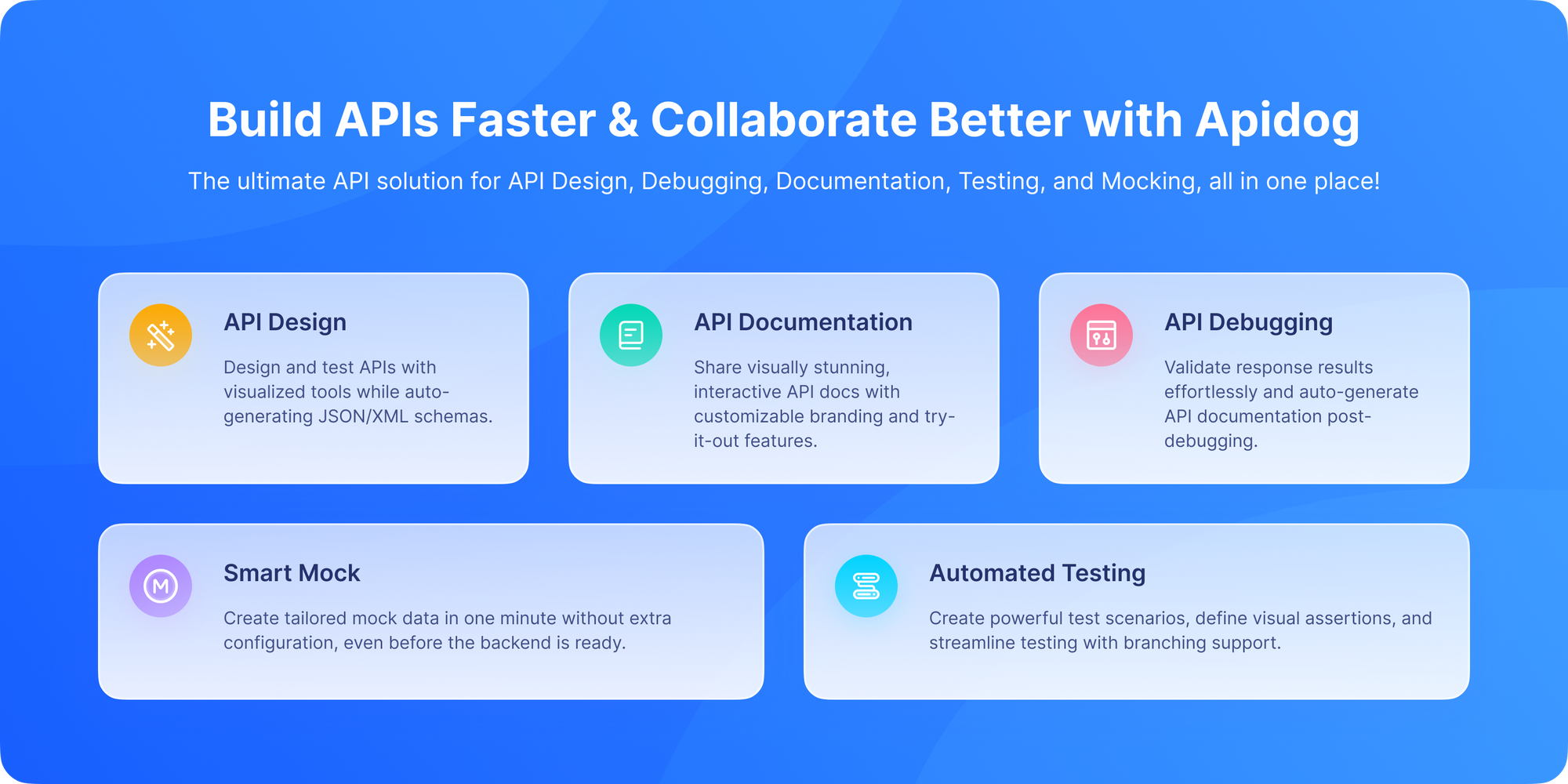
Testing endpoints that return 204 is crucial. You need to ensure they return the correct status code and don't accidentally leak data into the response body. Apidog is the perfect tool for this.
With Apidog, you can:
- Craft the Request: Easily set up a
DELETEorPUTrequest to your endpoint. - Send and Validate: With one click, send the request and immediately see the full response.
- Inspect the Details: Apidog will clearly show you the status code (
204) and all headers. Crucially, it will show the response body pane as empty, confirming your API is working correctly. - Write Assertions: You can write automated test scripts in Apidog that assert the response status is
204and that the response body is truly empty. This prevents regressions. - Debug Errors: If your endpoint mistakenly returns a body with a
204, or returns a200when it should return a204, Apidog will make this mistake immediately visible. - Clear documentation: Apidog allows you to document which endpoints return 204 and under what conditions, helping your team and API consumers.
- Collaboration: Share API specs with your team for better development and debugging workflows.
This level of testing is essential for building professional, reliable APIs. By integrating Apidog into your development process, handling status codes such as 204 becomes transparent and manageable.
Apidog vs Other API Tools for 204 Simulation
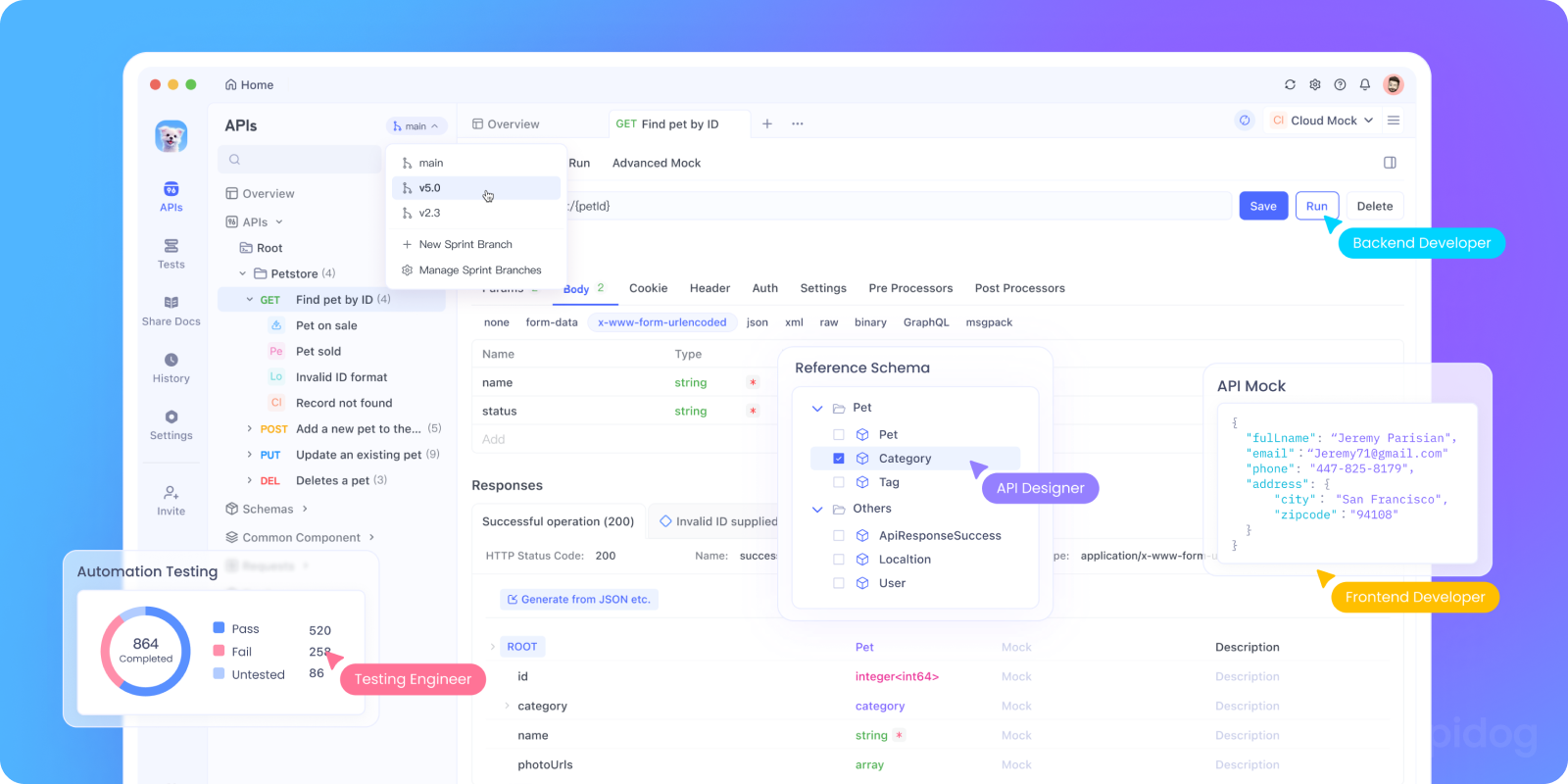
Let's compare:
- Postman: Great for manual testing, but mocking 204 behavior can feel clunky.
- Swagger UI: Useful for documentation but doesn’t simulate responses well.
- Apidog: Combines testing, mocking, and documentation in one platform. Perfect for experimenting with edge cases like 204.
Common Misunderstandings About 204 No Content
It’s easy to confuse 204 with other status codes or misinterpret its use:
- 204 means error or failure: Not true! It’s a success status without content.
- 204 is for empty responses only: It’s meant for successful processing with intentionally empty responses, not errors.
- 204 allows a message body: According to HTTP specs, 204 must not include a message body.
- 204 means no response at all: The server still sends headers and status line, just no message body.
Common Mistakes and Anti-Patterns
- Returning
200 OKwith{ "success": true }: This is wasteful and less semantic than a simple204. The status code is the success indicator. - Returning a Body with a
204: This violates the HTTP specification. A204response MUST NOT include a message body. - Using
204for aGETRequest: AGETrequest should always return a representation of a resource. If there's nothing to return, it might be more appropriate to return a200 OKwith an empty array[]or an empty object{}, or perhaps a404if the specific resource isn't found.
Common Misuses of 204 No Content
Unfortunately, developers often misuse 204. Here are a few pitfalls:
- Returning 204 with a body → This breaks the HTTP spec.
- Using 204 instead of 200 when a response body is expected.
- Returning 204 for GET requests → GETs should almost always return content.
What Happens If 204 Is Misused?
Misusing 204 can lead to strange client behavior:
- Including a body with 204 might cause clients to hang or throw errors.
- Sending 204 when a resource is actually missing should be avoided; 404 is better.
- Miscommunication can lead to confusing UI states or improper caching.
Thus, understanding and adhering to 204's intended use is essential.
Best Practices for Implementing 204 in REST APIs
- Use 204 primarily for DELETE and update operations.
- Don’t include a response body.
- Add meaningful headers if needed (like
LocationorETag). - Document the behavior so API consumers know what to expect.
204 in GraphQL, gRPC, and Other Protocols
- GraphQL: Rarely uses 204, since every query expects a response payload.
- gRPC: Instead of HTTP status codes, gRPC has its own error codes, but the concept of "no content" is sometimes mirrored with
OKplus no payload. - SOAP APIs: Historically, 204 wasn’t common, since SOAP messages typically always include an envelope.
Deep Dive: How 204 Works With RESTful APIs
In RESTful design, responses are critical for guiding client behavior. Because many actions may not require returning the entire updated resource or any content, 204 is an elegant way to save bandwidth and improve responsiveness.
For instance, in RESTful CRUD operations:
- GET: Returns 200 and resource data.
- POST: Returns 201 Created with new resource data.
- PUT: May return 204 if no updated data is sent back.
- DELETE: Typically returns 204 to confirm deletion with no content.
This design philosophy aligns with modern, efficient web APIs.
Conclusion: Embrace the Power of 204 No Content
The 204 No Content status code might seem simple, but it holds an important place in HTTP communication by signaling success without unnecessary data transfer. It saves bandwidth, improves UI experience, and clarifies server-client communication.
The HTTP 204 No Content status code is a masterpiece of minimalist design. It embodies the principle that the most efficient communication often says just enough and nothing more.
In a world of bloated JSON responses and over-engineered APIs, the correct use of 204 is a mark of a developer who understands the nuances of the HTTP protocol and respects both the client's and the server's resources.
It's not a code of absence; it's a code of completion. It’s the satisfying click of a well-made door closing, the final piece of a puzzle fitting into place. It is the sound of success, and that sound is silence. If you’re building APIs, use 204 carefully:
- Great for DELETE and update actions.
- Avoid for GETs.
- Document it well.
If you develop or consume APIs, mastering how to use and respond to 204 will make your applications more efficient and user-friendly. So the next time you're building an endpoint for a DELETE, PUT, or toggle action, don't just default to 200 OK. Embrace the elegance of 204 No Content.
And remember, the best way to learn is by doing so. Don't forget to download Apidog for free. Use a tool like Apidog to ensure your implementation is precise, efficient, and perfectly compliant, making your APIs a pleasure to use and a benchmark of quality. Apidog makes testing, documenting, and working with various HTTP status codes like 204 easy and effective, ensuring your API's behavior is clear and consistent.
